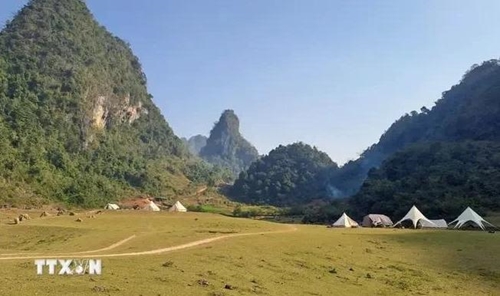With the park offering 130 unique heritage sites reflecting over 500 million years of the Earth’s history, the province has developed four geological tourism routes.
    |
 |
|
Visitors are interested in bathing themselves in the glory of Non Nuoc Cao Bang UNESCO Global Geopark. |
Capitalizing on its global recognition, the park has witnessed remarkable growth. Between 2020 and August 2024, Cao Bang hosted over 5.4 million tourists, surpassing its target by 8%. Key tourism indicators for the 2020-2025 period have already been met or surpassed.
Over the past six years, the managing board of the geopark has prioritized heritage preservation, creating distinctive tourism products and generating sustainable livelihoods for ethnic minorities in the region.
According to Luong Van Huan, Chairman of the People’s Committee of Phuc Sen commune, having partnered with the geopark, local Nung An ethnic villagers engaged in traditional blacksmithing, incense making, and “do” paper production. This collaboration has offered them training opportunities to enhance product quality and introduce their crafts to Vietnamese and international visitors. It has also fostered greater local awareness of heritage preservation and ecological protection.
Chu Thi Vinh, Vice Chairwoman of the People’s Committee of Trung Khanh district, said the district houses over 20 heritage sites within the geopark, including the iconic Ban Gioc waterfall. To attract tourists, it has organized the annual Ban Gioc waterfall festival and culinary contests, and encouraged investment in tourism services. Trung Khanh now boasts the Khuoi Ky stone village community-based tourism site, 22 homestays, 22 standard hotels and guesthouses, and 67 folk singing clubs.
Vi Tran Thuy, Director of the Non Nuoc Cao Bang Management Board, said the unit will advise provincial authorities regarding infrastructure investments in the four geopark tourism routes in the time to come. Future plans also include training local residents in heritage-based community tourism, and integrating traditional crafts and One Commune One Product (OCOP) items.
Source: VNA